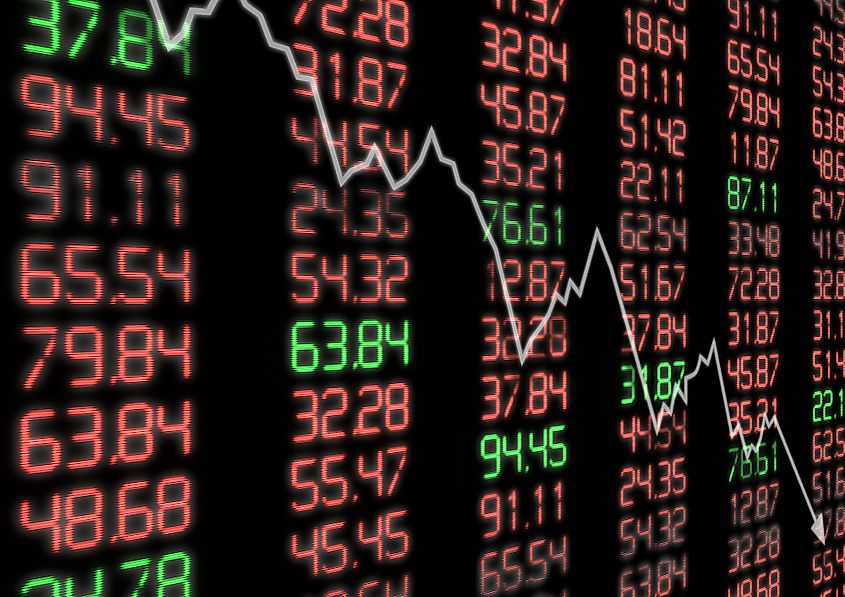What Was Black Monday?

- On that fateful day, stocks fell 12.82 percent, following an 11 percent drop the previous Thursday.
- On this day, the Dow Jones Industrial Average (DJIA) dropped almost 22 percent in one day.
- This was a 16 percent drop, but it started going up and closed 533 points lower than its opening.
- March 16 saw the biggest point loss in history, when it dropped 2,997.10 points, or 12.93 percent.
The phrase “Black Monday” has an ominous look and sound to it, and with good reason. It has been used to signify four days that led to stock market crashes:
- October 28, 1929
- October 19, 1987
- August 24, 2015
- March 9, 2020.
Although analysists claim that the August 2015 Black Monday was more of a market correction than a crash, it still made the list. Each one happened for varying reasons, and here are low-downs on all of them.
October 28, 1929
It has been almost 100 years since this first Black Monday occurred, and it set off the 1929 stock market crash. On that fateful day, stocks fell 12.82 percent, following an 11 percent drop the previous Thursday. Once people discovered that the banks had used their savings for Wall Street investments, they clamored to take back their deposits. The banks were only able to give back 10 cents on the dollar, causing people to lose their life savings. Banks went bankrupt, people could not buy houses, and businesses were unable to get loans. The Federal Reserved ended up raising interest rates to preserve the value of the dollar.
October 19, 1987
On this day, the Dow Jones Industrial Average (DJIA) dropped almost 22 percent in one day. This kicked of a global stock market decline, and it took close to two years for the DJIA to recover. There is no major news event linked to the drop, but there were several events that led to a panic amongst investors:
- The United States trade deficit widened with respect to different countries
- A growth in programmatic, computer-driven, trading
- Unrest in the Middle East (Iran and Kuwait)
- A crackdown on insider trading and corruption
- There were also fears surrounding an anti-takeover bill introduced in the U.S. House of Representatives. It proposed eliminating loans provided to fund corporate takeovers.
After this crash, the Federal Reserve started directing funds into the country’s banks. By the end of October 1987, the DJIA rose 15 percent.

August 24, 2015
The Dow fell 1,089 on this day, right after the market opened. This was a 16 percent drop, but it started going up and closed 533 points lower than its opening. This is considered a market correction, although it happened right after a 531 point drop the Friday before. This was all the result of concerns about China’s slowing economic growth at the time.
March 9, 2020
2015 was nothing compared to March of 2020, when the Dow tumbled 2,013.76 points (7.79 percent) on March 9. Three days later on March 12, it dropped another 2,352.60 points (9.99 percent); March 16 saw the biggest point loss in history, when it dropped 2,997.10 points, or 12.93 percent. This is higher than the October 1929 Black Monday fall, which was 12.82 percent.
This recent drop was the result of global fears about the COVID-19 pandemic, compounded by a possible recession, and drops in oil prices. On February 12, 2020, the DJIA had achieved a record high of 29.551.42. The market’s 11-year bull market run was effectively ended.
What Next?
Anyone who has invested in the stock market has seen their holdings devalued. However, panicking and selling off stocks has added risks, because it is hard to know when to re-enter the market. This can be detrimental in the long run. The Balance.com stated that bear markets average about 22 months, with some as short as three.
Most financial advisors recommend waiting things out, and many also advise customers to buy stocks now, since prices are low. The 2020 stock market crash is unprecedented, but history has shown that these strategies are good ones. It is also essential to have at least three to six months of living expenses saved up just in case.











